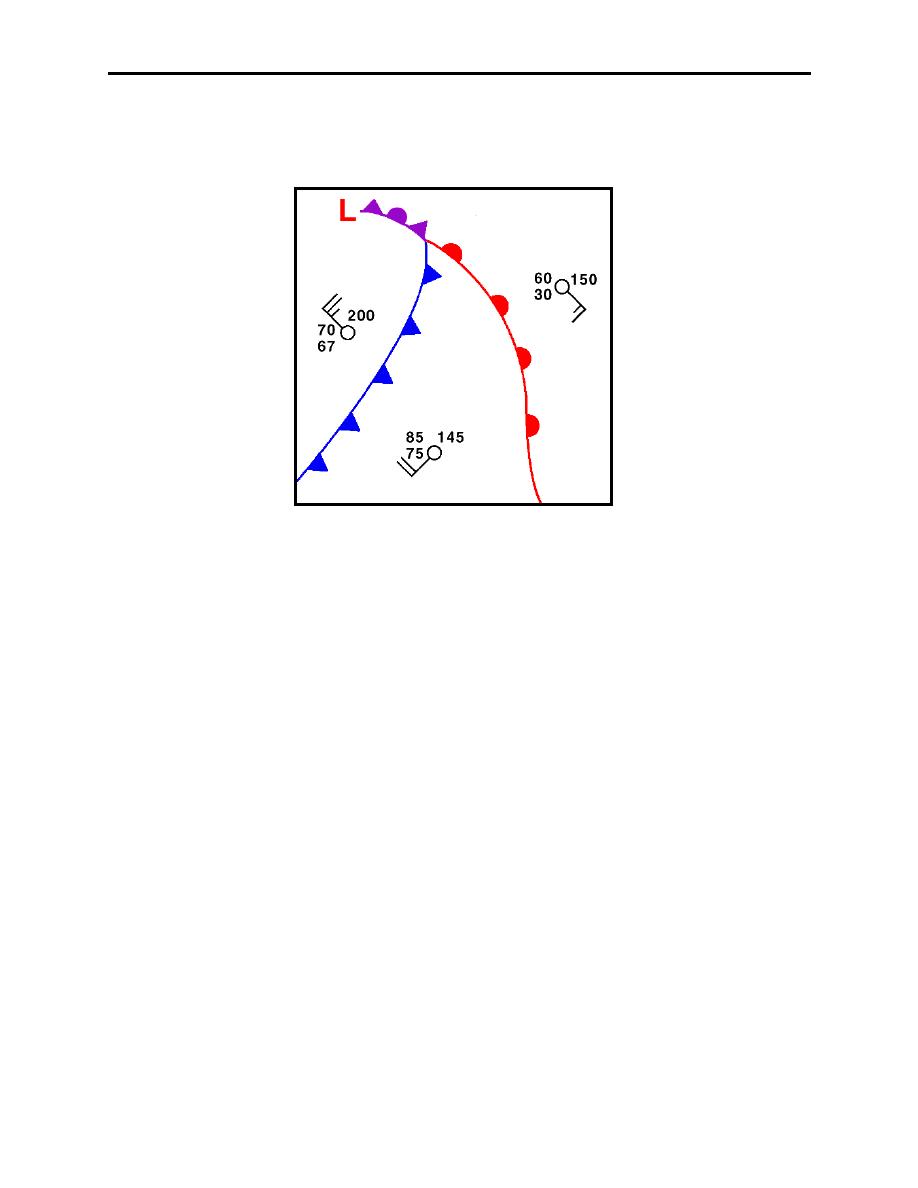 |
|||
|
|
|||
|
|
|||
| ||||||||||
|
|  CHAPTER THREE
AVIATION WEATHER
fronts move faster than warm fronts, in general. Next, we usually see a 90 wind shift from one
side of the front to the other, with the two exceptions explained below. Finally, every front is
located in a trough of low pressure.
Figure 3-7 General Model of a Frontal System
This course will use the general frontal model presented in Figure 3-7 to illustrate the different
characteristics of the various fronts. Remembering the basics of this model can aid in the
comprehension of how the various fronts usually move, as well as the characteristic changes in
weather from one side of a front to the other. Once this model is understood, it can easily be
modified to fit the appropriate real-world situation by rotating the system, by changing the angle
between the fronts or considering a curvature to any of the frontal lines. As we discuss each
frontal type, imagine zooming in on this model to study the particular characteristics of that
front. These frontal characteristics will be discussed in depth for each type of front, and as a
group in the next section, which explains how meteorologists determine where to place fronts on
weather charts.
306.
FRONTAL DISCONTINUITIES
Differences in the various properties of adjacent air masses, such as their temperature, moisture
(indicated by the dew point), winds, and pressure, are used to locate and classify fronts. For
example, when comparing two dissimilar air masses, one will be colder than the other. Because
of this, the colder one will be denser and drier (it must have a lower dew point). Cloud types are
useful indicators of the type of front and will be discussed in connection with each individual
front.
Temperatures
Temperature is one of the most easily recognizable differences across a front. In the lower layers
of the atmosphere a greater temperature change will be noticed with frontal passage or when
3-8
Mechanics of Frontal Systems
|
|
Privacy Statement - Press Release - Copyright Information. - Contact Us |